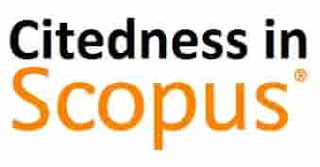Modeling and Analyzing Academic Researcher Behavior
DOI:
https://doi.org/10.12695/ajtm.2016.9.2.2Keywords:
Researcher Behavior, Ulrich Model’s 3C, Academia-IndustryAbstract
Â
Abstract. This paper suggests a theoretical framework for analyzing the mechanism of the behavior of academic researchers whose interests are tangled and vary widely in academic factors (the intrinsic satisfaction in conducting research, the improvement in individual research ability, etc.) or non-academic factors (career rewards, financial rewards, etc.). Furthermore, each researcher also has his/her different academic stances in their preferences about academic freedom and academic entrepreneurship. Understanding the behavior of academic researchers will contribute to nurture young researchers, to improve the standard of research and education as well as to boost collaboration in academia-industry. In particular, as open innovation is increasingly in need of the involvement of university researchers, to establish a successful approach to entice researchers into enterprises’ research, companies must comprehend the behavior of university researchers who have multiple complex motivations. The paper explores academic researchers' behaviors through optimizing their utility functions, i.e. the satisfaction obtained by their research outputs. This paper characterizes these outputs as the results of researchers' 3C: Competence (the ability to implement the research), Commitment (the effort to do the research), and Contribution (finding meaning in the research). Most of the previous research utilized the empirical methods to study researcher's motivation. Without adopting economic theory into the analysis, the past literature could not offer a deeper understanding of researcher's behavior. Our contribution is important both conceptually and practically because it provides the first theoretical framework to study the mechanism of researcher's behavior.
Keywords:  Academia-Industry, researcher behavior, ulrich model’s 3C.
Downloads
References
Behrens, T.R., & Gray, D.O. (2001). Unintended consequences of cooperative research: impact of industry sponsorship on climate for academic freedom and other graduate student outcome. Research Policy.
Boardman, P. C., & Ponomariov, B. L. (2009). University researchers working with private companies. Technovation 29, 142-153.
Bozeman, B., & Gaughan, M. (2007). Impacts of grants and contracts on academic researchers interactions with industry. Research Policy: 36(5), 694-707.
Czarnitzki, D., Hussinger, K., & Schneider, C. (2011). Commercializing academic research: the quality of faculty patenting. Industrial and Corporate Change 20(5), 1403-1437.
Davis, Lee ., Larsen, M.T., & Lotz, P. (2009). Scientists perspectives concerning the effects of university patenting on the conduct of academic research in the life sciences. The Journal of Technology Transfer 36(1), 14-37.
De Fuentes, C., & Dutrénit, G. (2012). Best channels of academia industry interaction for long-term benefit. Research Policy.
D’Este, P., & Perkmann, M. (2010). Why do academics engage with industry? The entrepreneurial university and individual motivations. The Journal of Technology Transfer 36(3), 316-339.
Frey, B.S., Benz, M., & Stutzer, A. (2004). Introducing procedural utility: Not only what, but also how matters. Journal of Institutional and Theoretical Economics (160), 377-401.
Frey, B.S., & Oberholzer-Gee, F. (1997). The cost of price incentives: An empirical analysis of motivation crowding-out. The American economic review.
Glenna, L.L., Welsh, R., Ervin, D., Lacy, W.B., & Biscotti, D. (2011). Commercial science, scientists’ values, and university biotechnology research agendas. Research Policy 40(7), 957-968.
Grimpe, C. (2012). Extramural research grants and scientists funding strategies: Beggars cannot be choosers?. Research Policy, 41(8), 1448-1460.
Hottenrott, H., & Thorwarth, S. (2011). Industry funding of university research and scientific productivity. Kyklos 64(4), 534--555.
Jain, S., George, G., & Maltarich, M. (2009). Academics or entrepreneurs? Investigating role identity modification of university scientists involved in commercialization activity. Research Policy (38), 922-935.
Lacetera, N. (2009). Different missions and commitment power in r&d organizations: theory and evidence on industry-university alliances. Organization Science.
Lam, A. (2010). From ivory tower traditionalists to entrepreneurial scientists academic scientists in fuzzy university-industry boundaries. Social Studies of Science, 307-340.
Lam, A. (2011). What motivates academic scientists to engage in research commercialization:'Goldâ€ribbon'or 'puzzle'?. Research Policy (40), 1354-1368.
Lee, Y.S. (1996). Technology transfer and the research university: a search for the boundaries of university-industry collaboration. Research policy, 25: 843--863.
Link, A. N., Siegel, D. S., & Bozeman, B. (2007). An empirical analysis of the propensity of academics to engage in informal university technology transfer. Industrial and Corporate Change 16(4), 641-655.
Looy, Bart Van and Callaert, J., & Debackere, K. (2006). Publication and patent behavior of academic researchers: Conflicting, reinforcing or merely co-existing? Research Policy, (35), 596-608.
Looy, Bart Van and Ranga, M., & Callaert, J. (2004) Combining entrepreneurial and scientific performance in academia: towards a compounded and reciprocal Matthew-effect? Research Policy, (33), 425-441.
Meissner, C. (2010). University Research and Industry Involvement. Three Essays on the Effects and Determinants of Industry Collaboration and Commercialisation in Academia. PhD thesis.
Patel, M.G. (2003). Exploring the research behavior of university professors through patent data. economics.stanford.edu.
Perkmann, M., & Walsh, K. (2009). The two faces of collaboration: impacts of university-industry relations on public research. Industrial and Corporate Change, 18(6), 1033--1065.
Perkmann, M., King, Z., & Pavelin, S. (2011). Engaging excellence? Effects of faculty quality on university engagement with industry. Research Policy, 40(4), 539-552, 2011.
Renault, C.S. (2006). Academic capitalism and university incentives for faculty entrepreneurship. The Journal of Technology Transfer, 227-239.
Siegel, D.S., Veugelers, R., & Wright, M. (2007). Technology transfer offices and commercialization of university intellectual property: performance and policy implications. Oxford Review of Economic Policy, 23(4), 640-660.
Tartari, V., & Breschi, S. (2012). Set them free: scientists' evaluations of the benefits and costs of university-industry research collaboration. Industrial and Corporate Change, 1-31.
Ulrich, D. (2009). HR Transformation - Building Human Resources from the Outside In.
Walsh, J. P. (2009). For money or glory?: commercialization, competition and secrecy in the entrepreneurial university. The Sociological Quarterly, 50, 145-17.
Downloads
Submitted
Accepted
Published
How to Cite
Issue
Section
License

This work is licensed under a Creative Commons Attribution-NonCommercial-ShareAlike 4.0 International License. Copyright @2017. This is an open-access article distributed under the terms of the Creative Commons Attribution-NonCommercial-ShareAlike 4.0 International License (http://creativecommons.org/licenses/by-nc-sa/4.0/) which permits unrestricted non-commercial used, distribution and reproduction in any medium











